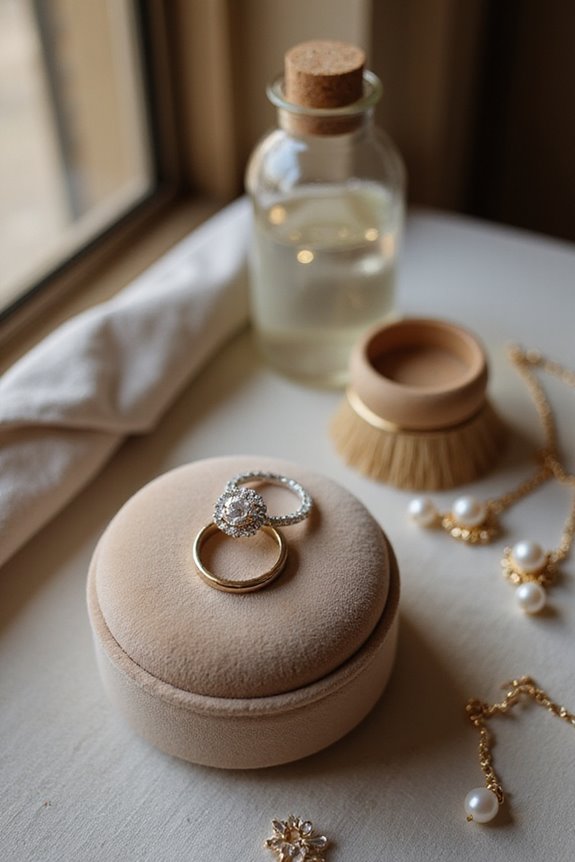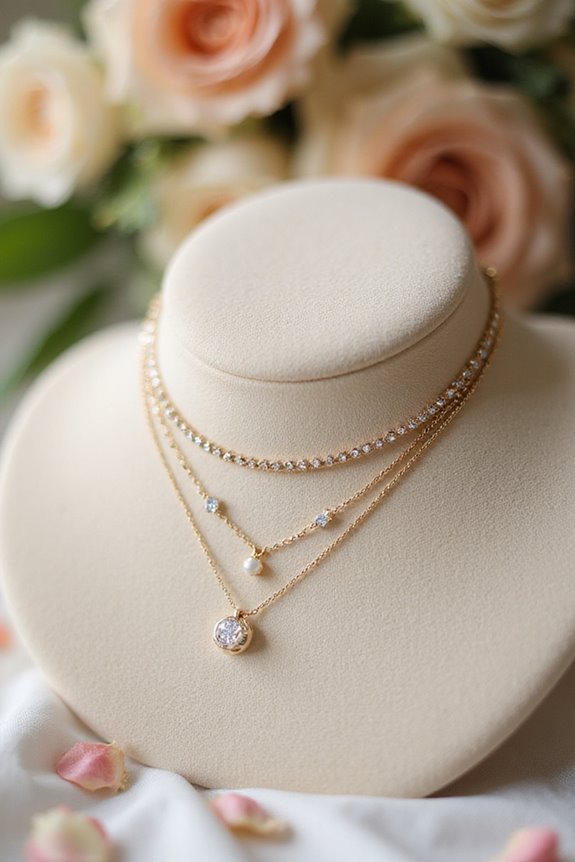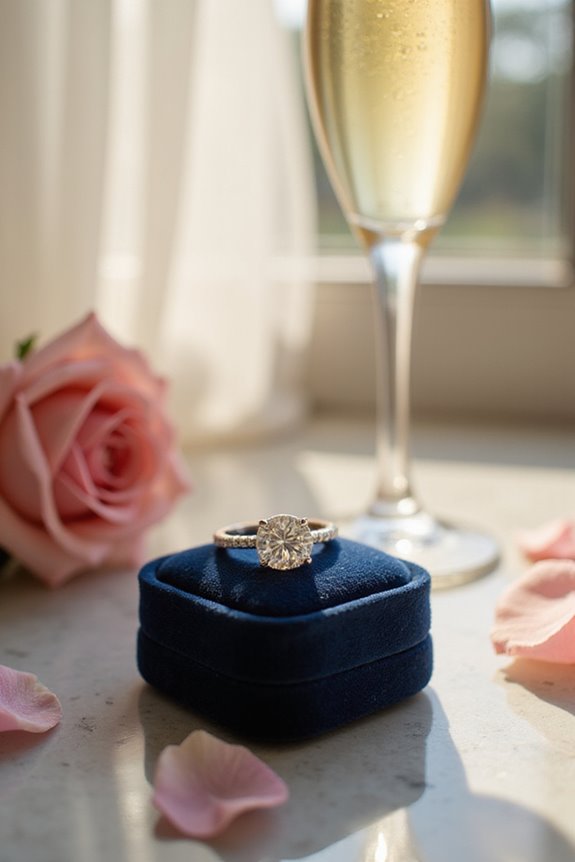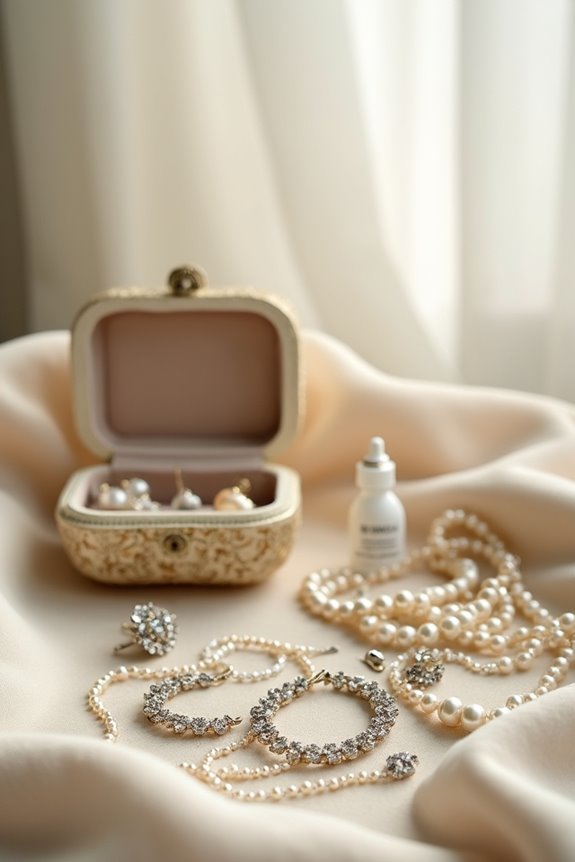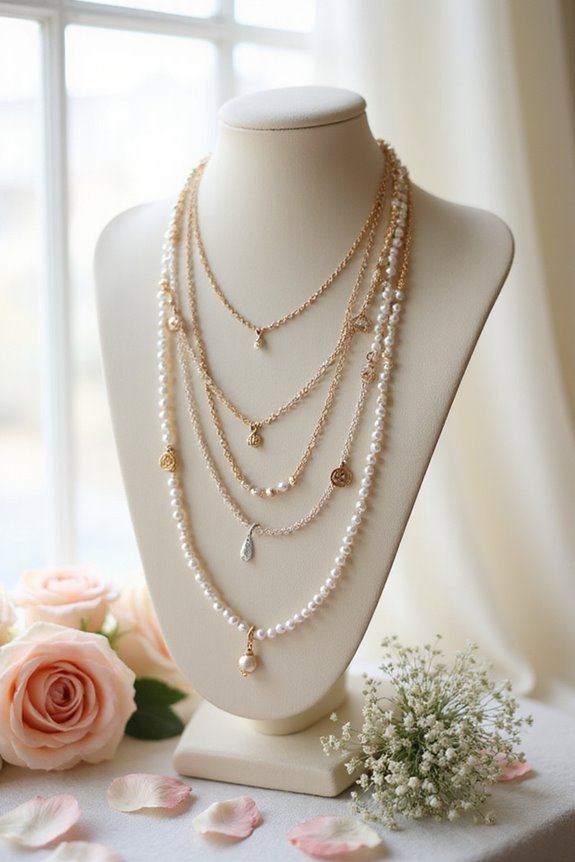When it comes to jewelry care, there are plenty of myths we should bust! Cleaning: Toothpaste can scratch gems, while vinegar might damage delicate stones. Stick to mild soap and water. For storage, don’t toss pieces in a box; use soft cloths to prevent scratches. Now, about durability—tungsten might crack if dropped, but stainless steel is both tough and stylish. And remember—gold markings can mislead. Curious about what else we might be overlooking?
Key Takeaways
- Toothpaste and vinegar can damage jewelry; use warm water with mild dish soap instead for safe cleaning.
- Storing jewelry in individual compartments prevents tangling and scratching, unlike tossing them into a box.
- Tungsten is durable but can crack; stainless steel is ideal for everyday wear without tarnishing.
- High-quality gold and platinum are suitable for daily wear, but avoid harsh impacts to maintain their condition.
- Not all gold markings indicate solid gold; professional appraisals are essential for verifying authenticity and value.
Jewelry Cleaning Myths
When it comes to cleaning our jewelry, we might think that any method will do, but that’s far from the truth. Many popular jewelry cleaning techniques, like using toothpaste or soaking in vinegar, can actually cause more harm than good. Toothpaste is abrasive and can scratch softer stones, while vinegar might corrode delicate gems. Instead, we should stick to DIY jewelry cleaning methods that are gentle. Using warm water with mild dish soap and a soft-bristle brush is a safe bet. For valuable or delicate pieces, consulting a professional is wise. Remember, just like we wouldn’t use sandpaper to clean our favorite shirt, we want to treat our jewelry with care to keep it looking its best!
Jewelry Storage Myths
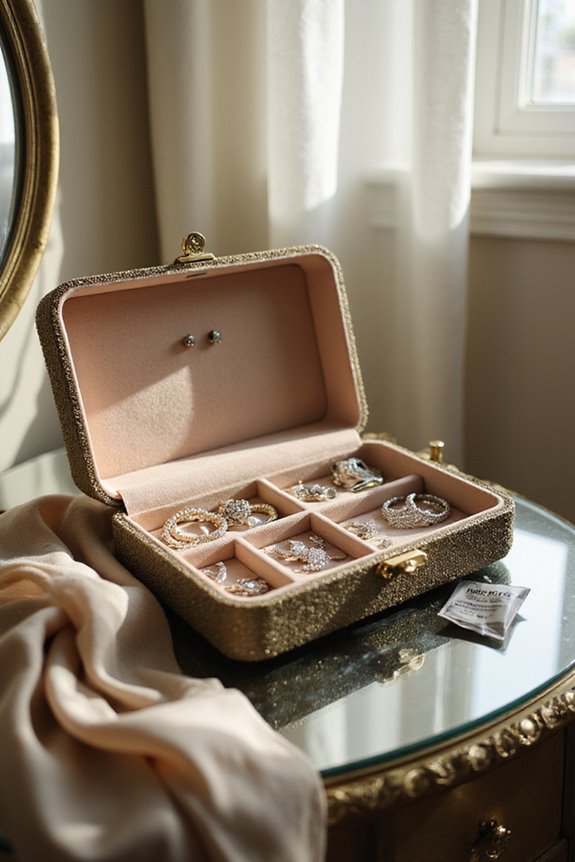
While we might think that tossing our jewelry into a box is a simple solution, it can lead to a tangled mess and scratched pieces. Instead, let’s explore better jewelry storage solutions.
Problem: Tangling and Scratching****
Loose boxes often lack compartments, causing our necklaces and rings to rub together. To avoid this, we can use dedicated organizers or pouches.
Solution: Individual Storage****
Using soft cloths or acid-free tissue paper for wrapping keeps our items safe from scratches.
Problem: Humidity Issues****
Storing jewelry in damp places can cause tarnishing.
Solution: Clean, Dry Environment****
Let’s keep our treasures in airtight containers or use silica gel packets to absorb moisture. With these jewelry organization techniques, we can help our pieces shine longer!
Jewelry Material Durability Myths
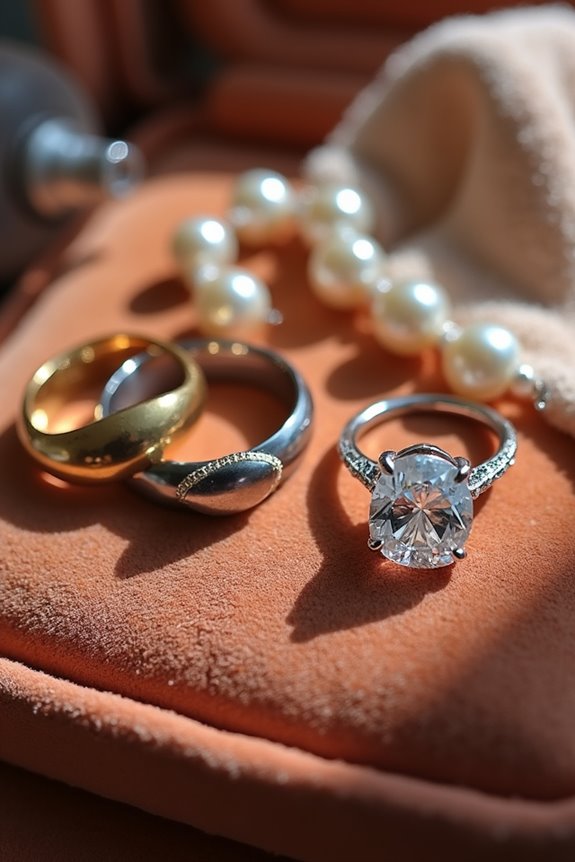
It’s easy to get swept up in the shiny allure of different metals when picking out jewelry, but let’s take a moment to talk about durability.
Tungsten Durability
People often think tungsten is indestructible, but while it’s super tough, it can crack if dropped. So, if you’re a bit clumsy, handle it with care!
Stainless Steel Durability
On the other hand, stainless steel is a fantastic choice for everyday wear. It resists scratches and doesn’t tarnish easily, making it low-maintenance. Plus, the 316L grade is hypoallergenic—good news for sensitive skin!
In short, both tungsten and stainless steel have their strengths. Just remember, durability doesn’t mean invincibility. Choose what fits your lifestyle, and enjoy wearing your jewelry!
Jewelry Wearing Myths
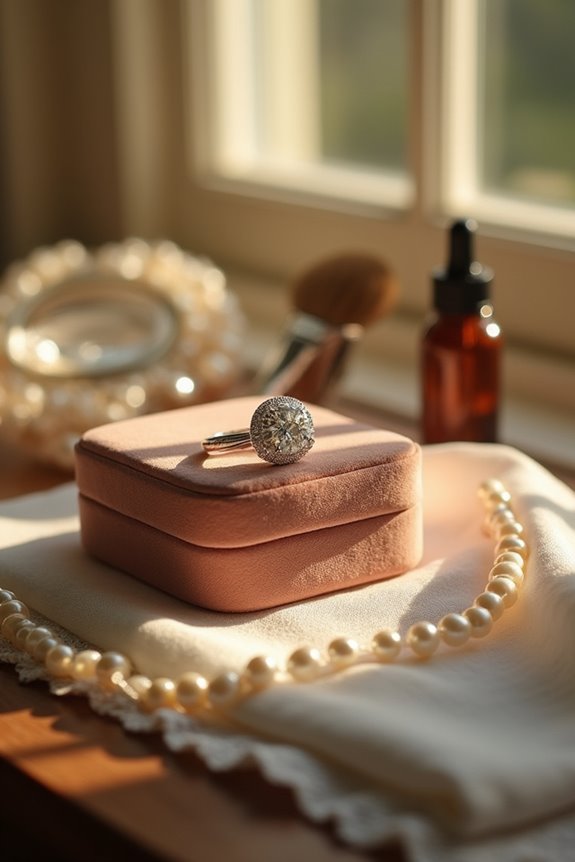
Jewelry wearing myths can sometimes hold us back from enjoying our favorite pieces to the fullest. For instance, many believe that wearing jewelry daily leads to wear and tear. In reality, high-quality gold and platinum are made for daily wear! Just remember to avoid harsh impacts and give it a cleaning now and then.
Then there’s the fear of tangling when jewelry layering. It’s true that necklaces can get knotted, but using different lengths and thicknesses can help. Plus, storing them separately can work wonders.
Finally, pearls are perfect for special occasions, contrary to the myths. Let’s embrace our jewelry with confidence, knowing these myths won’t dampen our sparkle! Moreover, choosing durable materials like solid gold or platinum can enhance the longevity of your jewelry pieces.
Authenticity and Value Myths
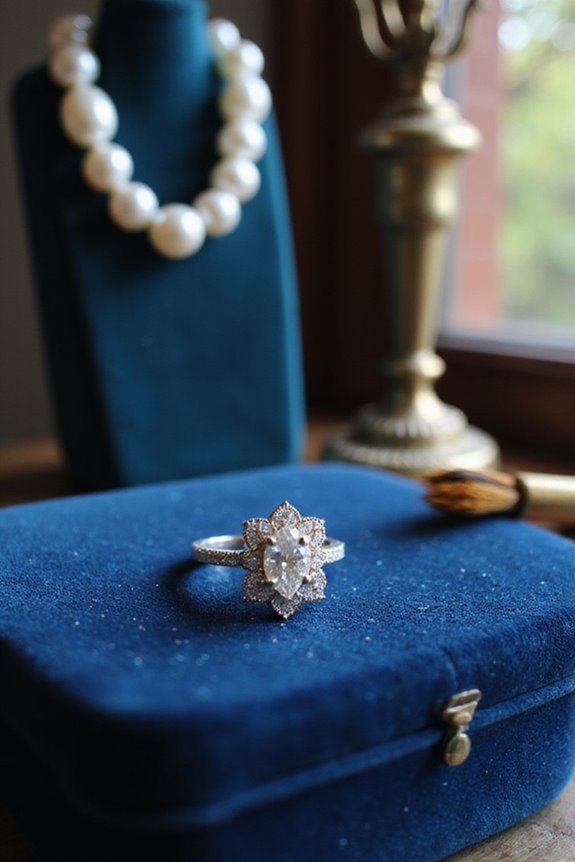
Authenticity and value in jewelry can feel like a maze, especially when we hear so many myths floating around. Many of us assume that any gold marking means it’s solid gold. Nope! Hallmarks like “GP” or “GF” indicate gold plating, not solid gold. Let’s talk authenticity verification—using a magnet can help, but it’s not foolproof. For a solid assessment, consider a professional appraisal or a Certificate of Authenticity (COA). These documents legitimize your piece and enhance its value assessment. Remember, just because it looks good doesn’t mean it is! So, don’t skip the tests or certificates; they’re your best friends in the jewelry world. We all deserve to know what we truly own, right?
Frequently Asked Questions
Can I Use Vinegar to Clean My Jewelry?
We can use vinegar cleaning for some jewelry, like silver, but we should prioritize jewelry safety. Always test first and remember that vinegar isn’t suitable for delicate items or certain gemstones. Choose wisely!
Is It Safe to Wear Jewelry While Exercising?
When we exercise, it’s important to contemplate jewelry sweat and exercise risks. While some pieces are safe, we should avoid bulky items that can snag or cause injuries, ensuring a safer workout experience.
How Often Should I Have My Jewelry Professionally Cleaned?
When it comes to professional cleaning frequency, we recommend every six months for most pieces. For high-value items, more frequent cleanings are essential. Following these jewelry maintenance tips guarantees our treasures stay beautiful and lasting.
Can Storing Jewelry in the Bathroom Cause Damage?
Storing our jewelry in the bathroom is like leaving a delicate flower in a storm; humidity impacts tarnishing and corrosion. We’ve learned that moisture-filled environments can quickly degrade our precious pieces, so let’s keep them safe elsewhere.
Does Wearing Jewelry Every Day Prevent Tarnishing?
Wearing jewelry daily doesn’t completely prevent tarnish, but it can help in tarnish prevention. Regular cleaning and careful handling alongside daily wear are essential to keep our pieces looking their best and minimize tarnishing effects.

